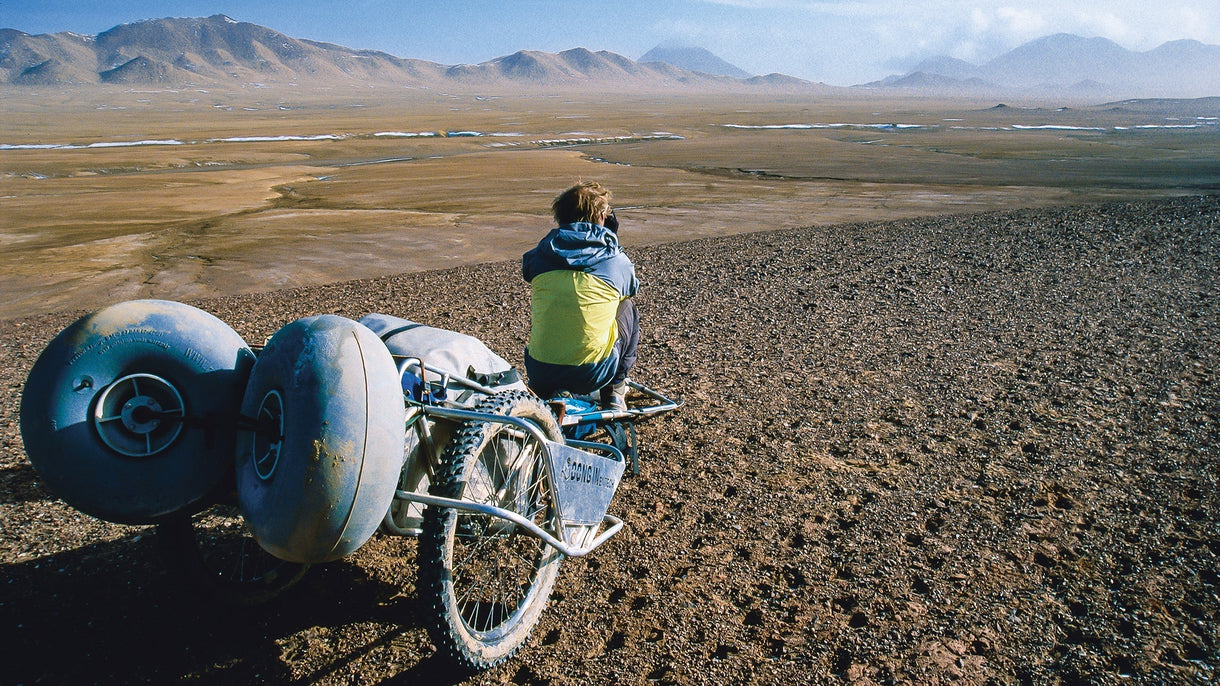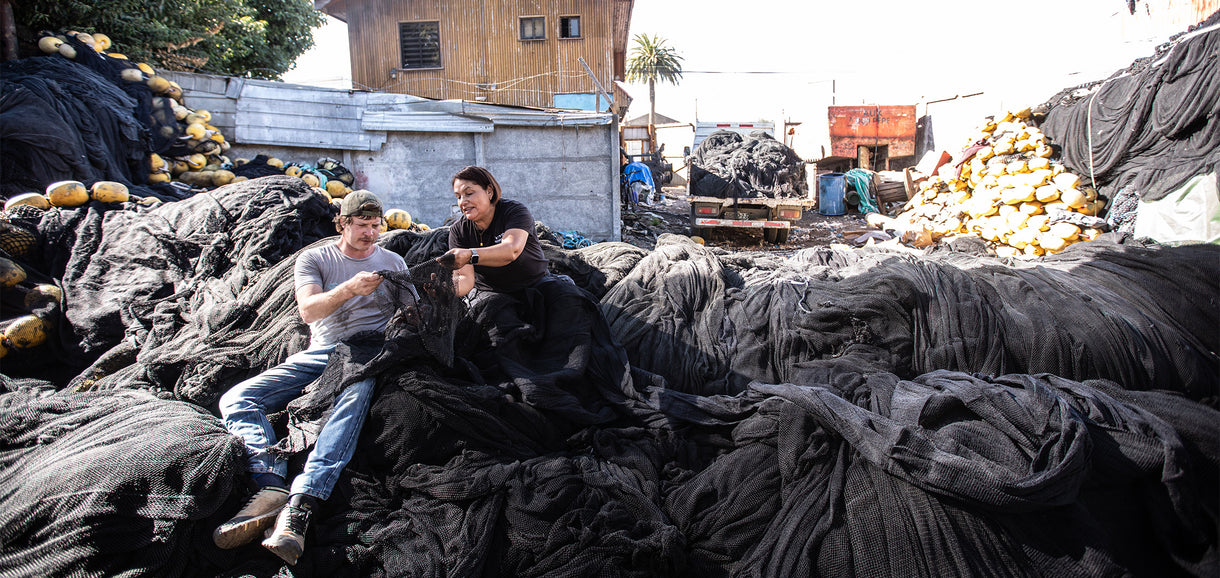A wildlife ecologist reflects on the wild places that are his escape hatch and life’s work.
By Rocky Mountain standards, the Blue Ridge escarpment is little more than mounds. Forced up and folded by continental collisions billions of years ago, then worn down by millions of years of physics and weather, these Southern Appalachian foothills are ancient, but modest in height. They don’t offer thin air vistas or many bare rock spires, but their beauty will leave you breathless in other ways. Subtlety is the calling card of these places, and I like the mellow afforded in their gentle, gradual ascent.
My Chevy pickup knows them well, downshifting to gather up the asphalt switching back and forth upon itself between ridges and hollows (here pronounced “hollers”). Tunnelled in by arches and colonnades of tulip poplars, basswood, oaks, hickories and a host of eastern hardwoods, flanked by a few pines in the gaps and declining stands of disease-shocked eastern hemlock in the sheltered spots, it’s almost hard to tell you’re in the mountains. Views of the rolling midlands to the south come in spurts through breaks in the curtains of trees.
I grew up wanting to be a mountain man (among 12 other things). I dreamed of going into undiscovered country; of rounding trail bends or topping a butte to see things no one else ever had. Those were the dreams of a Black kid growing up only seeing white men portrayed as being courageous and curious enough to venture into such places. Decades beyond boyhood dreams, I ended up a wildlife ecologist with birds at the centre of my being. With a successful career that’s spanned trail-building from dawn to dusk for a state agency and a distinguished professorship at a public land-grant university – with tenure giving license for wandering on the public trails I helped build – in many ways I live the dream I constructed in my mind so long ago. The idea that so much of it has been “public work” to benefit more than my dreaming is a pleasing thing.
On more occasions than I should probably admit – usually on a weekday when I ought to be doing something more conventionally productive – I create some remote work that requires that I leave the office-choked brokenness of Piedmont for the slightly higher elevation wholeness of Blue Ridge, in the Upcountry, or Upstate, western corner of South Carolina. Maybe it’s a much needed autumn raptor migration survey in a place called Caesars Head, or a ground truth-ing for some future spring warbler-chasing ornithology lab at Table Rock or grouse-seeking at Jocassee Gorges that gives me cause to absorb the interplay between a rugged topography, an almost overwhelmingly diverse botany and a seasonally dazzling array of birds and other wild beasts.

Drew Lanham worked his way from trail-building to a distinguished career as a wildlife ecologist in the Southern Appalachians. Photo: Cliford Mervil.
Glaciers never slid this far south, but even as their influences exceeded their reach, the region sat as a refugium; a kind of ecological Dutch oven, slow-cooking a rich biodiversity of salamanders, small mammals, fungi, wildflowers, avifauna and an unseen, uncountable universe of six-legged things, stewed together in the creases and coves protected by surrounding ridges. It is a place unlike any other in North America, and I’m fortunate to live within striking distance.
Caesars Head, Table Rock and Sassafras Mountain – these are my summits. The Jocassee Gorges – my Grand Canyon. All three mountains are within more expansive state parks, as none of South Carolina’s superlative highlands crest on federal lands. Sassafras peaks humbly at 3,554 feet, while Pinnacle at Table Rock sits at 3,415 feet. Caesars Head juts its jaw over the valley below it at 3,215 feet. While fog or storm clouds frequently shroud them, there is no need for supplemental oxygen.
Federal oversight only falls on the Ellicott Rock Wilderness that also nurtures the Chattooga Wild and Scenic River. Tumbling violently white over potential Class V death traps like Bull Sluice, then serenely pouring over rocky shoals, it is our largest trout-bearing water and James Dickey’s river of Deliverance. Dickey’s horrific tale of a weekend paddle gone awry – fairly or unfairly – remains the touchstone identifier for much of a region that’s still wild, but also severely hampered by poverty and misperception. Ironically, its infamy brings throngs of rafters and kayakers eager to test themselves by navigating among the hidden rocks and suck-holes.
The Jocassee Gorges came to state ownership/management in the 1990s. It is recovering, much of it cutover and high-graded for the best timber over a good portion of the last century. The inaccessible and undesirable forests left behind the clear-cuts hide many of the former abuses. More recently, Jocassee’s recovery has become a natural showplace, one of National Geographic’s “50 of the World’s Last Great Places.” In the Palmetto State, it serves as the ecological counterbalance to the Lowcountry’s ACE Basin, where slow-flowing blackwater creeks and languid rivers run imperceptibly downhill to meet tidal estuaries. Those coastal lowlands hold histories of enslaved Africans who built rice fields to make South Carolina a critical cog in the wheel of America’s rise as a nation. The Lowcountry also holds most of the state’s national wildlife refuges. And while I’m drawn to the Lowcountry, too, the Upcountry is where my family makes its home. I went to college here and make my living here. It is now a part of me, and I of it. I have become accustomed to walking hills; balancing on uneven ground and paying attention to what gravity can do given half a fool’s gamble at a better look.
 Along with Table Rock and Sassafras Mountain, Lanham includes Caesars Head in his trifecta of Southern Appalachian summits. Caesars Head State Park, South Carolina. Photo: Cliford Mervil.
Along with Table Rock and Sassafras Mountain, Lanham includes Caesars Head in his trifecta of Southern Appalachian summits. Caesars Head State Park, South Carolina. Photo: Cliford Mervil.
Beyond my preferences for low or high, up or down, wet or dry, I wander through lands public and private in my home state with a differently hued eye. I’m a Black man in love with wildness. I seek places many folks of any color would just as soon avoid. I bird watch, hike and deer hunt in places where there are far more black bears per square mile than Black people. I’m most comfortable alone in my travels but sometimes stopped cold to come across reminders of exclusion and racism.
I’ve had my cultural collisions with the racist histories of Black-excluding “sundown towns” and those who fly Confederate Battle/Dixie Flags and wish for the “old times not forgotten” when people like me were considered subhuman property good for picking cotton and not much else. I’ve encountered “fresh” racist graffiti in remote places where I’ve conducted bird research and caught the long uncomfortable stares from white men not so pleased to see a Black man working alongside a white woman. Yes, this still happens in South Carolina. The anger and fear amalgam of bile and rage that comes with knowing someone thinks your Black life matters less than their white one isn’t unique to the South, though. From Hawk Mountain in Pennsylvania to the Eastern Shore of Maryland to Chicago’s Gold Coast, in Montana’s Bitterroots and Oregon’s Eastern Cascades, in Orange County, California – I’ve been subjected to racism that is equally offensive. The plague isn’t regionally restricted.
I’m fortunate, though: in my 30-plus years wandering the “The Dark Corner” (as the still-busting revenuers seeking moonshine runners used to call it), I’ve found more friends than foes. And while I cannot afford to let my guard slip down too far, the wild places I seek often draw kindred spirits looking more for tranquility than trouble. Trout and trillium make the mark as common denominator among us.
So I continue to venture out. There’s usually no real plan. It often begins with me foregoing another meeting that likely doesn’t need my cynical opinions about the hundredth strategic plan I’ve seen (fail or ignored), or my comments distracting from the brilliance of millennial geniuses swimming in the potential of their visions for what should be. I leave the high-level planning to them. Complex statistics and virtual modelling on multiple screens are young professionals’ games. I’m closing in on less and less time left to go wild, so I light out for the hills, the Blue Wall. I need to stand on uneven ground. See real wild. Ponder algorithms of head and heart.
On those days I don’t have to go very far. Sometimes it’s in our school’s Experimental Forest, where I have 18,000 acres of land on which to play only a stone’s throw from my backyard. But often I want to go a little farther afield, where it’s harder to find me and the cell signal fails. On the pleasantly lonesome days when I stand exposed on the balding rock forehead of Caesars Head, and no one else has found a way to put off responsibility to crowd the spot, I don’t have to share the expanse of forest, mountain or lake with anyone except the ravens, red-tails and peregrines playing the windy updrafts that will toss your hat back at you if you’re brave enough to throw it out into the zephyring abyss. It’s still public, but also exclusively mine in the moment.
Standing on top of my known world in that moment with nothing else to cloud thinking but the expanse of space laid out below me, I think about the work I’ve done to make some of my dreams reality. Personally, it would be hard to write a better script. But then too, some of the public land I stand on – whether owned by state or federal entity – has had some measure of its existence in my hands.
I used to think about it as work done for the birds, but increasingly the focus has turned to the connections between birds and people. Even more, it has turned to the connections between nurturing nature and people who’ve been overlooked and downright denied in having a stake in what happens to wildness – whether it be an acre of greenspace in a city-owned public park, or millions of acres in the wildest, most remote national refuge. With breath not being something any one of us can take for granted these days, and with some of us threatened more by biological plagues and the unevenly cruel hands (or knees) of racial injustice bearing down upon our ability to inhale and exhale, I see my wandering as necessary perspective gained in a critical mission. Public means everyone. Even though I’m often alone in my travels to escape, I want to be sure that my definition of conservation – the intense, inclusive love for land and wild things such that both are “saved” in greater abundance for those coming later – keeps the “inclusive” component critical as a reminder that everyone be included in the conversation. Public, then, in that way of thinking, becomes a value central to my being.
Banner image – Lanham finds solace and perspective while solo-hiking the “ancient ridges forced up and folded by continental collisions billions of years ago.” Roan Mountain, Tennessee. Photo: Cliford Mervil.
____________________________________________________________________
Author Profile
























































